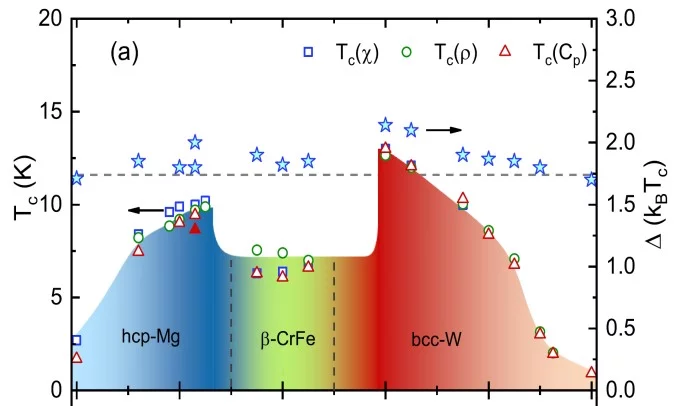Abstract:
The binary Re1−xMox alloys, known to cover the full range of solid solutions, were successfully synthesized and their crystal structures and physical properties investigated via powder x-ray diffraction, electrical resistivity, magnetic susceptibility, and heat capacity. By varying the Re/Mo ratio, we explore the full Re1−xMox binary phase diagram, in all its four different solid phases: hcp-Mg (P63/mmc), α-Mn (I43m), β-CrFe (P42/mnm), and bcc-W (Im3m), of which the second is non-centrosymmetric with the rest being centrosymmetric. All Re1−xMox alloys are superconductors, whose critical temperatures exhibit a peculiar phase diagram, characterized by three different superconducting regions. In most alloys, the _T_c is almost an order of magnitude higher than in pure Re and Mo. Low-temperature electronic specific-heat data evidence a fully gapped superconducting state, whose enhanced gap magnitude and specific-heat discontinuity suggest a moderately strong electron-phonon coupling across the series. Considering that several α-Mn-type ReT alloys (T = transition metal) show time-reversal symmetry breaking (TRSB) in the superconducting state, while TRS is preserved in the isostructural Mg10Ir19B16 or Nb0.5Os0.5, the Re1−xMox alloys represent another suitable system for studying the interplay of space inversion, gauge, and time-reversal symmetries in future experiments expected to probe TRSB in the ReT family.
Keywords: binary alloy; crystalline structure; magnetic susceptibility; electrical resistivity; heat capacity;
Facility: PPMS, LMX, µSR
Reference: T. Shang et al., Physical Review Materials 3, 024801 (2019)
Read full article: here

